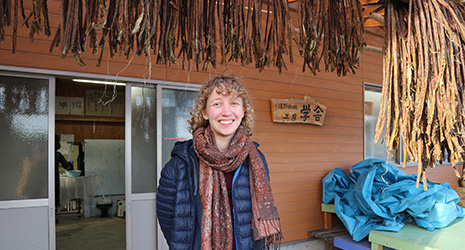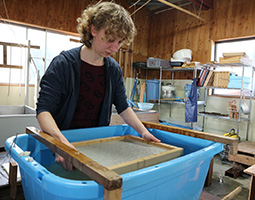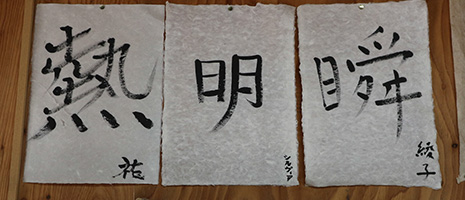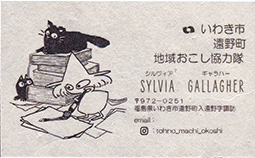March 2020
Paper Connecting Fukushima with the World

Sylvia Gallagher from New Zealand is helping to pass down the centuries-old tradition of washi paper making in Iwaki City, Fukushima Prefecture.


The people of Tohno in Iwaki City, Fukushima Prefecture started to produce Tohno Washi over 400 years ago to make the most of the high-quality paper mulberry cultivated in the area. At the height of prosperity, there were over 600 washi paper makers. However, this number has continued to decrease as the demand declines, and the last remaining producer ceased mulberry cultivation in 2010. In order to pass down this traditional technique of making washi to future generations, Tohno’s local community development organization established a washi workshop. In 2015, they also started to train individuals who are willing to assume the responsibility of producing Tohno Washi to make graduation and award certificates with the support of the Local Vitalization Cooperator, a program of the Ministry of Internal Affairs and Communications. Sylvia Gallagher, who hails from New Zealand, joined the project in Autumn 2019 as Iwaki City’s first non-Japanese Local Vitalization Cooperator.
Gallagher has enjoyed Japanese anime since childhood and started to teach herself Japanese when she was a high school student so that she could read Japanese manga and novels in their original language. While at university, where she majored in world history, she began taking a more serious approach to her study of Japanese. After graduating from university, she decided that she wanted to live in Japan – even if only for a short period of time – and applied for the JET Programme, which provides non-Japanese nationals with language teaching opportunities at Japanese schools. She arrived in Japan in 2017, and started to work as an assistant language teacher (ALT) at schools in Iwaki City, Fukushima Prefecture, a place devastated by the 2011 Great East Japan Earthquake.
“I first came across the name Fukushima in news reports on the earthquake when I was in my final year of high school,” says Gallagher. “When I was at university, I enrolled in a program that invited university students from Asian and Oceanian countries to Japan to facilitate intercultural exchange. I spent time in northern Ibaraki Prefecture at the time, which is not far from Iwaki City, and learned about the reconstruction efforts following the earthquake. So I have been interested in Fukushima for quite some time.”
In addition to assisting English lessons as an ALT at junior high-schools in the city, she also worked as a volunteer in Minamisoma City in northern Fukushima Prefecture, another one of the areas hit by the disaster. The interaction with the locals and with people from around the world who gathered there made her want to explore other types of activities. The search eventually led her to the Local Vitalization Cooperator program and the efforts being made to pass down Tohno Washi production to future generations.
Gallagher chose washi production because she knew washi was used to repair artworks in New Zealand. But the primary reason why she had gravitated toward washi was its intrinsic beauty. At the workshop in Tohno she participates in all the traditional techniques of paper making from preparing the paper mulberry fibers to crafting the paper itself. The washi paper she produces is used to make the graduation certificates that are presented to elementary, junior high school and high school children in the town.
“Imagining the children receiving their certificates makes me really happy,” Gallagher says.
While working as a volunteer in Minamisoma City, Gallagher and two of her ALT colleagues from the UK came up with the idea of making a picture book. She has always enjoyed drawing, she says, and wanted to share the current state of Fukushima Prefecture through the book. “While many people in some areas of Fukushima Prefecture were forced to evacuate from their hometown immediately after the Great East Japan Earthquake and the accident at the nuclear power station, people determined to reconstruct those areas have started to return. They are making the most of the networks established both in and out of Japan following the earthquake, encouraging the emergence of exciting movements. I too want people around the world to know more about Fukushima, where there are always new encounters to be had,” she says.
Gallagher and her former colleagues are working toward the publication of the picture book in the United Kingdom, and she sincerely hopes to use Tohno Washi for the printing of the book.


